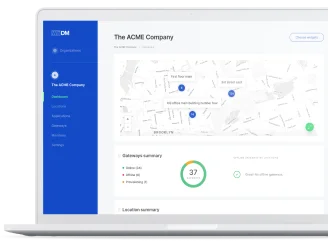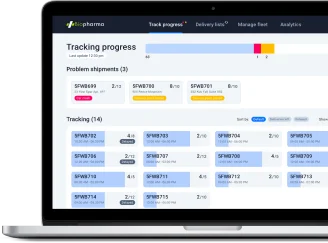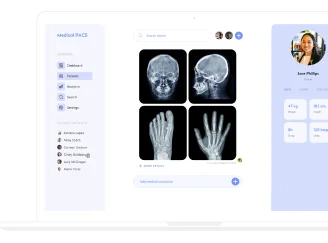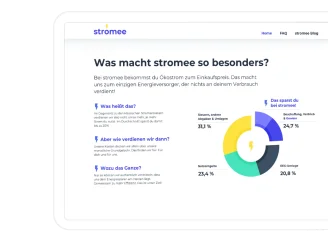Full-cycle custom software development company
-
Enter new markets, offer new services, and generate more revenue
-
Optimize costs and increase operational efficiency via automation and digitalization
-
Outperform competitors with an exceptional user experience and top-notch personalization of your software solution
-
Modernize legacy software, improve its performance, and reduce technical debt with software re-engineering


Benefits of Yalantis’ custom software development services
With technical excellence and extensive engineering experience, Yalantis cultivates a culture of engagement to deliver a solution tailored to your specific goals and objectives.
-
End-to-end software solutions
created via a full spectrum of IT services, extensive technical expertise, and well-adjusted solution design
-
Quality software products
as a result of effective service delivery, certified proficiency, cutting-edge technology, and an efficient SDLC
-
Cost efficiency
achieved with optimized resource provisioning and a lean technical design that is tailored to each scenario
-
Constraint management
with a unique framework for accelerated development that brings extra value and minimizes project risks
-
Technical excellence
gained by virtue of strategic talent management and an extensive talent pool for fast team scaling
-
Operational flexibility and visibility
ensured via well-organized change management, proactive problem solving, and transparent communication
-
500+
professionals on board
-
54%
annual growth rate
-
15+
years on the market
-
7+
development centers globally
Yalantis’ custom software development approach
Strategic
roadmapping
Business value
assessment
-
Business case ideation and refinement
-
Rapid cost-benefit analysis
-
Updated strategy definition
strategy design
-
Product component prioritization
-
Clear solution vision
-
Scope of tasks and engineering roadmap
Solution
design
product design
-
Product requirements detailling
-
Target audience analysis
-
Competitor evaluation
-
Risk assessment
Architecture design
-
In-depth architecture assessment
-
Comprehensive architecture design
-
Technology, framework, and platform selection
-
Architecture patterns, tactics, trade-off analysis
Software
engineering
rapid prototyping
-
Proof of concept
-
Proof of value
-
Minimal viable product
-
Proof of technology
Migrate
-
Lift-and-shift
-
Cloud modernization
Implementation
-
Comprehensive SDLC
-
Certified engineering specialists
-
Centers of technical excellence
-
Support and maintenance services
Strategic
roadmapping
Strategic
roadmapping
Business value
assessment
-
Business case ideation and refinement
-
Rapid cost-benefit analysis
-
Updated strategy definition
strategy design
-
Product component prioritization
-
Clear solution vision
-
Scope of tasks and engineering roadmap
Solution
design
Solution
design
product design
-
Product requirements detailling
-
Target audience analysis
-
Competitor evaluation
-
Risk assessment
Architecture design
-
In-depth architecture assessment
-
Comprehensive architecture design
-
Technology, framework, and platform selection
-
Architecture patterns, tactics, trade-off analysis
Software
engineering
Software
engineering
rapid prototyping
-
Proof of concept
-
Proof of value
-
Minimal viable product
-
Proof of technology
Migrate
-
Lift-and-shift
-
Cloud modernization
Implementation
-
Comprehensive SDLC
-
Certified engineering specialists
-
Centers of technical excellence
-
Support and maintenance services
More custom development solutions
-
Saas development
-
SaaS solutions from scratch
-
Conversion of traditional applications to SaaS
-
SaaS product localization
-
Improvements to existing SaaS products
-
-
Enterprise software development
-
Digital transformation
-
Data management and migration
-
Security and governance
-
Mobile solutions
-
Third-party integrations
-
Legacy modernization
-
-
Mobile app development
-
iOS, Android, and hybrid mobile apps
-
Mobile development from scratch
-
Legacy modernization
-
Conversion of desktop and web apps into mobile apps
-
-
Saas development
-
SaaS solutions from scratch
-
Conversion of traditional applications to SaaS
-
SaaS product localization
-
Improvements to existing SaaS products
-
-
Enterprise software development
-
Digital transformation
-
Data management and migration
-
Security and governance
-
Mobile solutions
-
Third-party integrations
-
Legacy modernization
-
-
Mobile app development
-
iOS, Android, and hybrid mobile apps
-
Mobile development from scratch
-
Legacy modernization
-
Conversion of desktop and web apps into mobile apps
-
Expertise and competencies
-
Technology excellence
Create and enhance your software product with powerful and cost-effective technology.
-
-
IoT Services
-
AI development services
-
Data science services
-
Machine learning development
-
Blockchain software development
-
Business-specific RPA services
-
Performance testing services
-
Data analytics services
-
IT infrastructure services
-
UI/UX design services
-
Cybersecurity services
-
Big data services
-
Business intelligence services
-
Data engineering services
-
-
Technology excellence
Create and enhance your software product with powerful and cost-effective technology.
- IoT Services
- AI development services
- Data science services
- Machine learning development
- Blockchain software development
- Business-specific RPA services
- Performance testing services
- Data analytics services
- IT infrastructure services
- UI/UX design services
- Cybersecurity services
- Big data services
- Business intelligence services
- Data engineering services
Solutions delivered by Yalantis custom software developers
Want more stories like these?
Check out more case studies by Yalantis to discover how we develop custom software and what benefits it brings to our clients.
Client reviews on the quality of Yalantis’ work
Insights into custom software engineering

How technology companies can protect intellectual property
Discover best-working approaches to protect your intellectual property. And get practical advice on how to ensure you work with a trustworthy software partner.

Core app development phases we follow at Yalantis
During our journey in app development, we build our own agile approach: a mix of visibility, predictiveness, and effective management. Find out how.

Security best practices for web and mobile app development
Application security is crucial. Learn how to apply security best practices at each stage of application development to protect your application.
FAQ
What are your commitments as a custom software development company?
We combine our domain expertise, technical excellence, skilled in-house development teams, and well-established processes with your vision to create a great software product for your business. To do this, we follow these fundamental tenets:
- Client-centric development and open communication processes
- Compliance with the latest data security requirements in your industry
- Intellectual property rights protection for your software product
- Smooth and continuous delivery and support processes
- Established processes for collaborating off-site and on-site
- Maximum project predictability and detailed documentation
How do your Centers of Excellence (CoEs) help to provide uninterrupted custom software development?
The availability of CoEs indicates that a software engineering vendor has achieved a high level of maturity and can guarantee top-quality services. A CoE is an expert team dedicated to a specific technology, industry, or skill within an organization. Our CoEs have implemented frameworks and approaches for successful project delivery based on our experience with hundreds of client projects. In addition, our CoEs facilitate the constant development of our overall technical proficiency, since they share innovative practices with the rest of the company.
What are more benefits of your custom software development services?
Here’s what helps us build software solutions tailored to your unique business objectives and processes:
Industry-dedicated delivery units. We’ve built diverse teams of professionals in software engineering, architecture, business analysis, project management, and other spheres that have experience in particular industries. This allows us to create relevant technical solutions taking into account industry standards, laws, and regulations as well as to maximize the value delivered to our clients. Currently, we have delivery units for supply chain management, healthcare, IoT, FinTech, and real estate.
Agile software development. Our clients benefit from full control over their projects, process transparency and visibility, early and predictable delivery, adherence to cost estimates and schedules, and the ability to make changes and corrections as needed. As you determine the priority of your functionality, we get to understand what’s most important for your business and customers so we can focus on delivering features that provide the most business value.
How does your custom software development agency ensure each project’s top-level security?
Our cybersecurity experts work to ensure that your IT systems and data are safe from intrusion and comply with GDPR, HIPAA, and other requirements. We not only assess your current security system but also provide real-time information on security vulnerabilities and create and re-engineer a secure architecture that ensures the protection of individuals’ privacy.
What steps does your custom software development approach include?
The steps below help us develop, launch, and augment your innovative product:
- Define business goals and objectives for a detailed and accurate project roadmap
- Elaborate on the product vision and non-functional requirements in tight collaboration with your team
- Design a cost-effective custom technical solution in accordance with the product vision and strategy
- Develop the software application and user experience based on software design documentation
- Use quality control and management systems to deliver a high-quality product
- Ensure a stable product launch and successful operation to secure your business from potential losses
- Evolve product functionality based on insights from data analytics and user feedback
Approaches that help Yalantis meet tight deadlines and budgets when providing custom software development services
We create customized software solutions for your specific business needs that fit within your time and budget constraints, provide smooth and continuous delivery, and guarantee business continuity according to the highest industry standards. But what helps our custom software development company ensure such high software quality?
Yalantis’ Platforms Core: A technology engine that optimizes custom software development
When a company requests custom software development, they typically have a tight deadline or a limited budget for implementation. But software providers often offer a fully custom implementation that is costly, time-consuming, and rarely meets business expectations. This leads to low-quality software and broken commitments.
What is Platforms Core?
Platforms core combines a development framework and commonly implemented product features. In other words, it is a combination of reference architectures, modules, components, and deployment scripts to accelerate project bootstrapping and speed up development.
Platforms Core helps us efficiently develop a target solution for any business without compromising security, development speed, and overall product quality. It keeps us from reinventing the wheel and overspending on commonly developed functionality.
We use predefined solution components, including custom developed modules and time-proven third-party solutions for functionality such as:
- user identity management, login, and user admin panels
- data caching, logging, and monitoring
- infrastructure provisioning
How our clients benefit from Platforms Core
As a result of Platforms Core, our clients’ projects benefit enormously:
- Less waste. We reduce project development costs by up to 15 percent using industry best practices, tools, and components.
- Faster development. We save from 25 percent to 75 percent of development efforts on commonly used features and tasks.
- Quick project bootstrapping. You get the first demo in the first week of working with us.
- Rapid environment provisioning. You get a basic working environment in days, not weeks.
- Shorter time to market. Your time to market is shortened by up to 20 percent.
- Fewer defects. The defect ratio is lowered by up to 20 percent.
The right SDLC model: An effective way to turbocharge the development process
The software development life cycle (SDLC) is used in the software industry to design, develop, and test high-quality software that meets clients’ expectations and is completed within time and cost estimates.
An SDLC includes an in-depth plan for how to create, support, replace, and change or improve specific software. The SDLC determines a methodology for enhancing product quality and the entire development process.
Different organizations define the SDLC in their own unique way, but it usually includes the steps below:
- Business requirements elicitation and analysis
- Design
- Implementation (building the product)
- Testing
- Production release
- Post-release maintenance and support
Yalantis has defined these steps within our development methodology and grouped them into three stages (or groups of processes): discovery, development, and support.
How our custom software development agency’s SDLC approach helps us meet project restrictions
Yalantis uses two main software development frameworks:
- The classic project management approach is recommended by the international Project Management Institute (PMI) and is recognized as a standard all over the world. This is a general SDLC approach that ensures keeping within project constraints.
- Scrum is a more flexible, collaborative, and iterative approach that is used for processes, roles, and artifacts (daily meetings, demos, retrospectives, backlog grooming, etc.).
Such a combined approach to development allows us to:
- be agile and keep projects within constraints at the same time
- conduct a discovery phase when creating a technical solution
- build fit-to-market applications and keep all software development processes transparent for our clients and partners
- start the development phase rapidly with tight deadlines
- deliver early and often
What types of SDLC models do we use to provide cost- and time-effective custom software development services?
The best SDLC model for meeting time and budget restraints depends on the specific requirements of the project, the team’s expertise, and available resources. However, we commonly use the SDLC models below to address time and budget constraints.
- Incremental SDLC model
The incremental SDLC model breaks down software development into small, manageable parts called increments. In the incremental approach, the highest priority requirements are addressed first, and software is delivered to users in small increments. One increment delivers a working version of the product that is ready to be tried and evaluated by users. User feedback is then used to refine the requirements for the next increment, and the process is repeated until the entire software product is completed.
We use this approach in three cases:
- The client has a vision for the product but only has clear requirements and a design for part of it.
- The software product already exists and the main goal is to make changes, add new functionality, or improve existing functionality.
- Some parts of software development, such as finalizing requirements or implementing the design, are done on the client’s side, and the client wants only particular services from our side.
How the incremental approach helps us meet time and budget requirements:
- Prioritization of requirements. The incremental approach involves breaking down the project into small increments, or releases, with each release addressing a specific set of requirements. We address the highest priority requirements in the first increment. This allows the team to focus on delivering the most important functionality first. Prioritization helps to ensure that the team is making the best use of their time and resources by working on the most critical features first.
- Early delivery of working software. In the incremental approach, each release provides a working version of the software. Therefore, users can start using the product early during development, giving important feedback and allowing custom software developers to make changes and fixes. Early delivery of working software can help you meet tight project timelines by allowing users to start using the software before the entire project is complete.
- Flexibility and adaptability. The incremental approach is flexible and adaptable, allowing the team to make changes as needed throughout the development process, which is valuable when working under strict project constraints. By making changes and adjustments as needed, the team can ensure they are making the best use of their time and resources.
- Incremental testing and quality assurance. In the incremental approach, each release undergoes testing and quality assurance before it’s released to users. This allows us to solve problems early in the development process, decrease the possibility of major issues later, and guarantee that the fully developed software is of high quality and satisfies users’ needs while fitting within time and budget constraints.
When the incremental SDLC model isn’t the way to go
While the incremental SDLC model can be beneficial in many situations, there are times when it may not be the best choice. One such case is when there are many changes in the project scope.
If there are frequent and significant changes in the project’s scope, it can be challenging to break down the development process into small increments. In such cases, each increment may require significant changes to the requirements, design, and development, making it difficult to keep the development process on track.
Additionally, if there are frequent changes in the scope of the software project, it may be difficult to maintain consistency and coherence throughout the development process. Each increment may end up being a separate and disjointed piece of software, making it challenging to integrate all increments into a cohesive whole.
In situations where there are a lot of changes in the project scope, it may be better to use a more adaptive and flexible approach.
- When an adaptive SDLC model is best for meeting strict project requirements
The adaptive SDLC model is what we follow at Yalantis. An adaptive SDLC offers the fastest implementation and allows a project manager to keep the budget under control. With this model, the client knows at any given time:
- the actual value of already developed functionally
- the cost of planned functionality
- the expected budget for project completion
- how much is still in the budget for development
The main task that this model solves is ensuring the fastest possible release of the finished product. This is possible thanks to the quick start of development without waiting for the end of the discovery phase.
How does a project go when following the adaptive SDLC model?
The discovery phase begins immediately after signing the contract. After two to three weeks, we can start the development phase. This also means that for some time, the discovery team and development team will work in parallel. All functionality is estimated in small sets and sent for development after your approval.
Delivery of each user story, from idea to production deployment, takes three sprints (six weeks):
- Sprint 1 — create and validate requirements
- Sprint 2 — create designs based on documented requirements
- Sprint 3 — start developing functionality
When the adaptive SDLC model isn’t the way to go
No matter the SDLC model you choose for your project, Yalantis takes responsibility for the project’s success and the quality of the developed product. Keep in mind that the adaptive SDLC model cannot be used when:
- the project cost should be fixed before the start of the development phase
- you can’t be involved in the project on a daily basis
Above, we provided general insights regarding which SDLC approaches are best suited for meeting time and budget constraints. For a more personalized approach, consult with us and we’ll suggest the most appropriate SDLC for your particular project.
Project management techniques that help us deal with your project’s time and budget constraints
The following schedule management practices and deliverables help our project managers estimate a project early thanks to multiple high-level and in-depth estimation techniques:
- A high-level rough order of magnitude (ROM) estimate helps us identify the effort and cost needed to implement a project. This estimate allows us to figure out if we can cover the whole scope desired by the client. Knowing the amount of work we can do in a particular time frame is an enormous time-saver for the software development customer.
- Crashing defines whether we’re meeting the client’s project constraints from the very beginning. Crashing involves adding resources or increasing the amount of work done in a given time frame to reduce the project duration.
- As soon as a detailed estimate is ready, we apply schedule compression to shorten the project timeline without compromising the quality of the end product.
Cost management is a project manager’s ongoing activity, since the project manager has to define all potential issues that might raise the cost of timely project completion. The most vital metric Yalantis utilizes as part of budget planning is estimate at completion (EAC). Scope reprioritization is one more technique we use to estimate the total cost of the project.
Need high-quality customized software solutions? We can help you. Our custom software development company has established multiple approaches and uses effective best practices to ensure cost- and time-effective customized software development services.
Collaborate with Yalantis

got it!
Keep an eye on your inbox. We’ll be in touch shortly
Meanwhile, you can explore our hottest case studies and read
client feedback on Clutch.
Yalantis in brief
-
15+
years of experience
-
500+
IT experts aboard
-
35+
active clients
-
Project inquiries
-
Careers
-
Phone number
+ 1 213 4019311
Our offices
-
Poland
123 Jerozolimskie avenue, Warszawa, 00-001 -
Ukraine
12 Vasylya Stusa street, Lviv, 790005 Dmytra Yavornytskoho Avenue, Dnipro, 490058 Illinska street, Kyiv, 04070 -
Cyprus
8 Athinon street, Larnaca, 6023 -
Estonia
12 Parda, Tallinn, 10151













